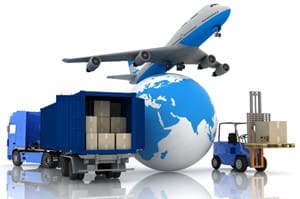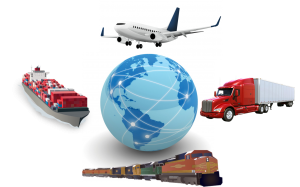 When it comes to managing your freight spend, there are a few options to consider. The three traditional methods are the use of a transportation management system (TMS), transportation execution system (TES), and managed transportation services (MTS). Ultimately it comes down to whether shippers want to manage their freight spend in-house or outsource it.
When it comes to managing your freight spend, there are a few options to consider. The three traditional methods are the use of a transportation management system (TMS), transportation execution system (TES), and managed transportation services (MTS). Ultimately it comes down to whether shippers want to manage their freight spend in-house or outsource it.
A TMS offers optimization capabilities across multiple modes to improve service levels and reduce freight spend. A TES is generally mode specific and lack optimization capabilities, but for shippers with simpler transportation requirements, that is often all they need. Large shippers with complex needs may turn to MTS providers to plan and execute their loads.
For each of these options, software and service providers need to set a clear path for success. Below are some transportation strategies for success for suppliers of TMS, TES, and MTS.
Look to the Cloud
SaaS solutions are becoming the norm in the industry, and this does not just apply to smaller companies that are targeting Tier 2 and Tier 3 customers. A robust SaaS solution offers the same features and functionality as an on-premise solution but can be deployed quicker and generally more cost-efficiently. Companies need to build a SaaS offering into their near-term growth plan to remain competitive in a crowded market.
This is especially true during the coronavirus pandemic where more employees are continuing to work remotely. This includes job functions that have historically been performed on premise; a SaaS solution enables rapid up-dates to be pushed out to all employees without the need for time-consuming upgrades and configurations.
Invest in Last Mile
The last mile is the most difficult and most expensive part of the supply chain journey. The growth of e-commerce and omni-channel should represent an opportunity for TMS suppliers. Currently, it does for only a few providers of fleet management. There are several reasons for this: Last mile routing is different from cross-country routing. Many retailers will rely heavily on parcel solutions or a transportation execution solution rather than a multimodal TMS, and other retailers will examine crowdsourcing solutions rather than a TMS. Coronavirus has changed the outlook for direct-to-consumer commerce, and a TMS is now a critical component of this strategy. There is still room to compete in last mile, but suppliers need to think creatively to capitalize on this opportunity.
For TES providers, the growth of e-commerce is only going to make the last mile more important. Better ETA and better visibility into when orders will arrive are a requirement.
Improve Real-Time Visibility
Real-time visibility solutions are more important than ever. Electronic data interchange (EDI) solutions have proven deficient in providing robust visibility. New solutions are using telematics and other solutions for improved visibility. TMS suppliers need to partner with transportation visibility companies or build their own solution.
Turn to Machine Learning
The real-time visibility solutions are raising the prospect that machine learning can be used to improve estimated times of arrival (ETAs). But unless a TMS provider has access to network transportation data (public cloud providers do), the visibility provider will be in a better position to use artificial intelligence to provide these enhanced ETAs than the TMS provider.
But machine learning can be used in other innovative ways as well. For example, in last mile routing the time a job takes to complete is dependent not just on the miles that need to be driven but also on the congestion, the type of product being delivered, the type of residence, and whether the value-added services are provided at the destination. Ma-chine learning can be used to “learn” these constraints rather than having to do time studies and hard code these constraints into the solution.
Invest in IoT
IoT and connected trucks and containers are gaining a lot of traction in the market. Sensors in trucks can help provide better visibility and make predicted ETAs more accurate. Additionally, connected trucks can provide information on specific driver’s driving patterns and habits, leading to improved safety as well as visibility.
For MTS providers, the transportation strategies for success are less dependent upon improving technology than improving service levels.
Demonstrate a Higher Degree of Competence
MTS providers need to be able to show a higher level of transportation competence than both the potential client and other MTS providers. Competence can be demonstrated in a few ways.
First, MTS providers can set targets for service improvement or cost savings, and then conduct quarterly business reviews to track progress. Second is to hire, train, and retain the best available talent. And finally, have strong consultative capabilities in terms of network design, strategic procurement, and transportation rate benchmarking.
Address Outsourcing Risks Head On
There are two main risks that need to be addressed. First are technology risks. MTS providers must be willing to allow the customer to own the TMS. If the relationship comes to an end, the MTS supplier must have a method of transferring that TMS, that is configured to meet the shipper’s needs, to their former customer.
Second is the risk of losing transportation expertise. The provider must be willing to operate in a hybrid model where some planning and execution tasks are controlled by the MTS provider and some are owned by the shipper.
Improve Pricing Flexibility
MTS relationships generate both fixed and variable costs. Fixed costs include the salaries of planners and account managers, the costs of the technology, and rent. Variable costs are based on the number of transactions and transportation moves. Pricing needs to accommodate both kinds of costs but also meet the customer’s needs. Some customers want pricing that accommodates true costs on an ongoing basis and some customers want pricing that is consistent from month to month despite seasonal surges. The ability to turn fixed costs into variable costs can help provide pricing flexibility. One example of this is moving planners from account to another account to accommodate seasonal surges or shipping slowdowns.
Transportation strategies come in all shapes and sizes. For TMS and TES providers, transportation strategies for success revolve around improved technology for optimization, visibility, and data aggregation. For MTS providers, transportation strategies are more geared toward the service element, although technology is still a major differentiator. Whether a company manages its transportation spend in-house or outsources it, these strategies should help suppliers succeed.



















